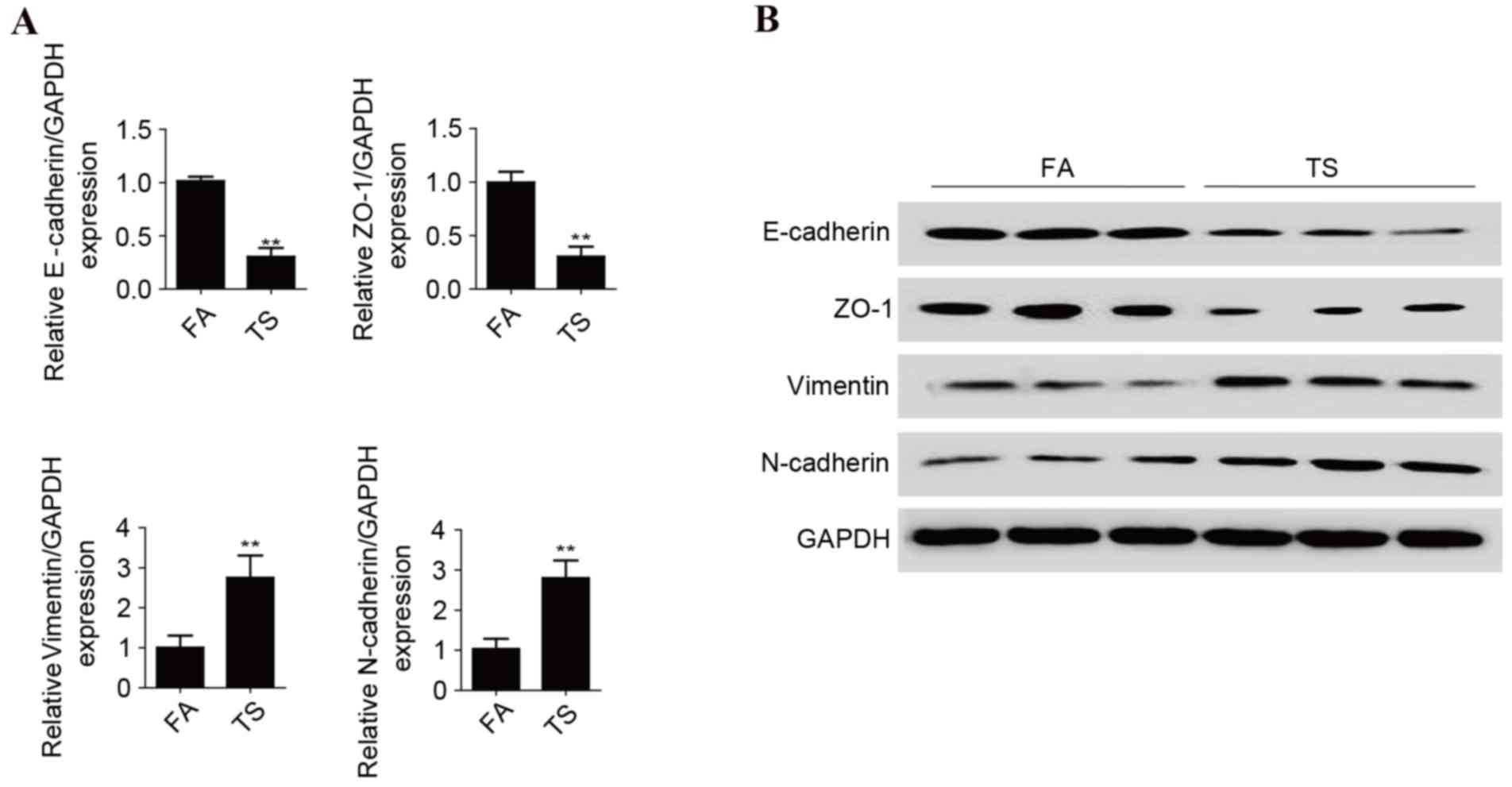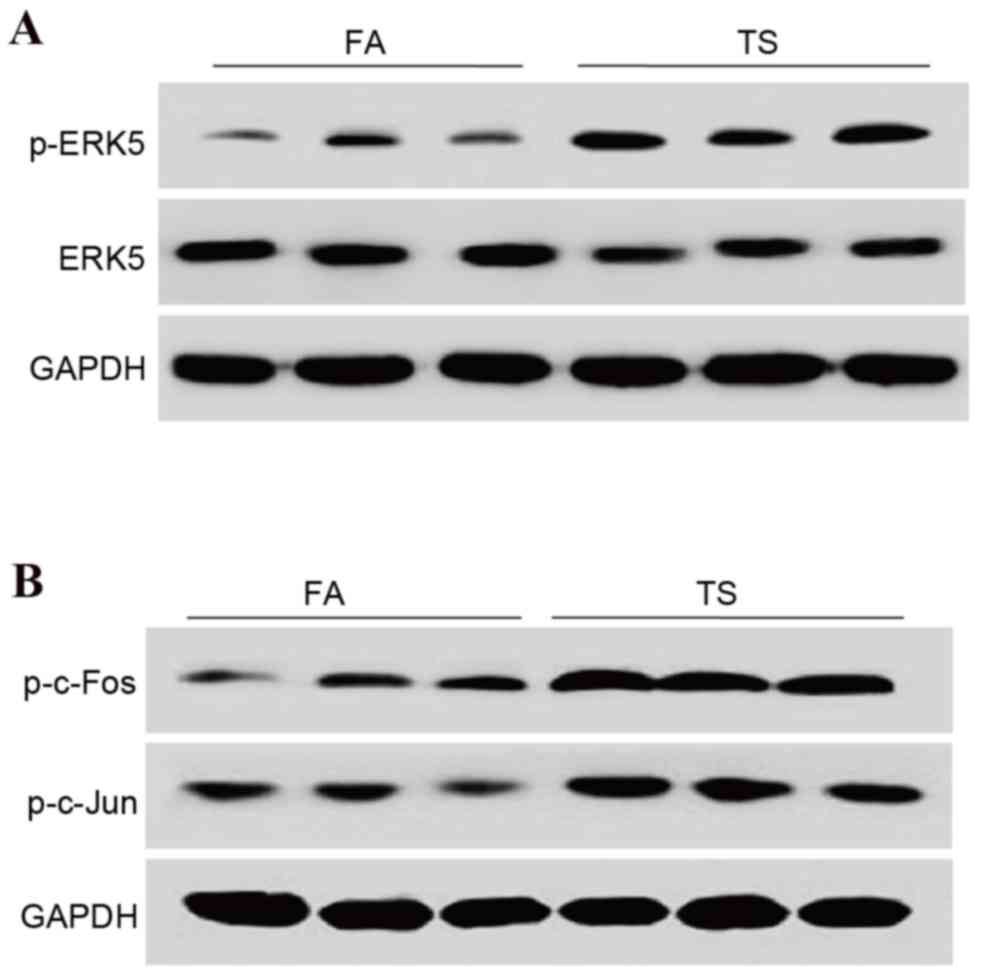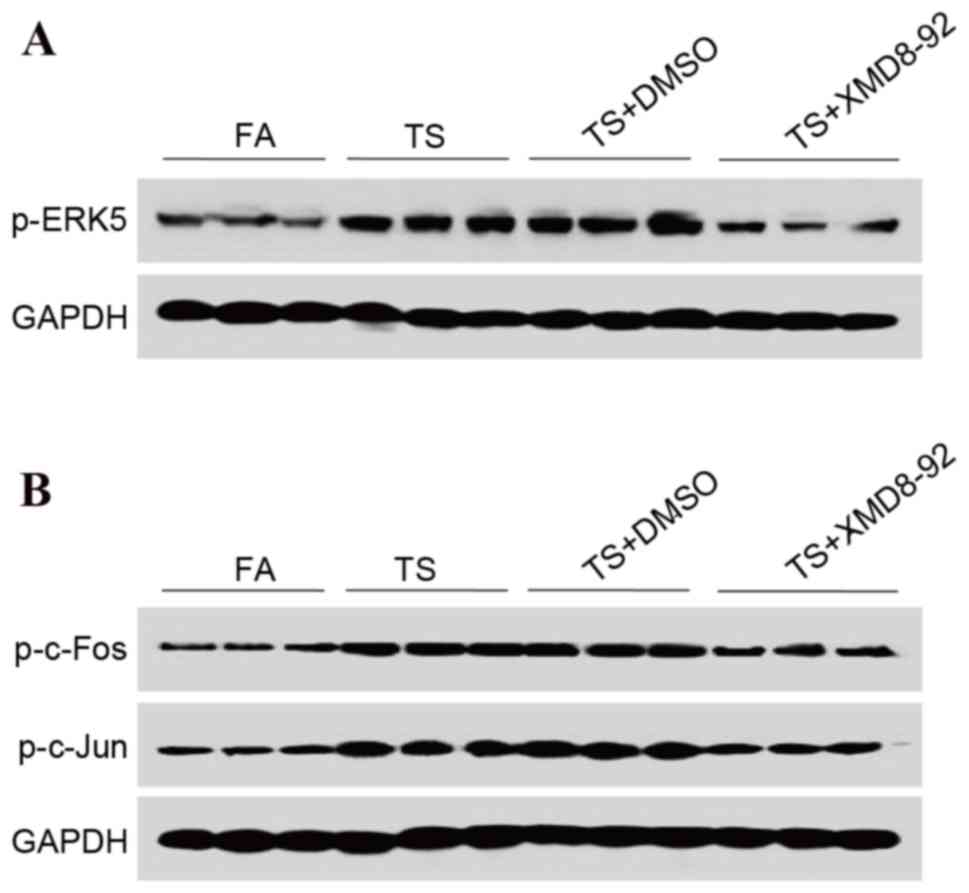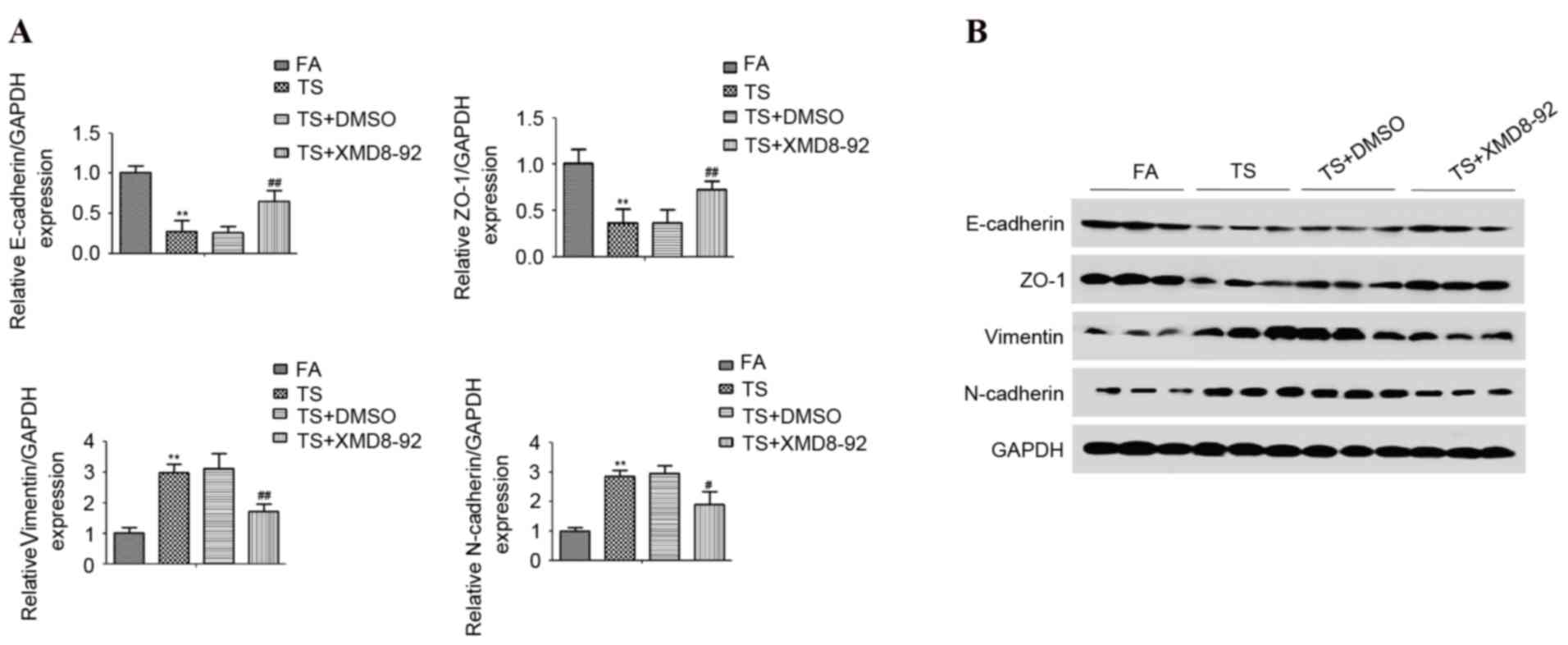|
1
|
Ding M, Li Y, Wang H, Lv Y, Liang J, Wang
J and Li C: Diagnostic value of urinary microRNAs as non-invasive
biomarkers for bladder cancer: A meta-analysis. Int J Clin Exp Med.
8:15432–15440. 2015.PubMed/NCBI
|
|
2
|
Montella M, Di Maso M, Crispo A, Grimaldi
M, Bosetti C, Turati F, Giudice A, Libra M, Serraino D, La Vecchia
C, Tambaro R, Cavalcanti E, et al: Metabolic syndrome and the risk
of urothelial carcinoma of the bladder: A case-control study. BMC
Cancer. 15:7202015. View Article : Google Scholar : PubMed/NCBI
|
|
3
|
Babjuk M, Burger M, Zigeuner R, Shariat
SF, Van Rhijn BW, Compérat E, Sylvester RJ, Kaasinen E, Böhle A,
Redorta J Palou, et al: EAU guidelines on non-muscle-invasive
urothelial carcinoma of the bladder: Update 2013. Eur Urol.
64:639–653. 2013. View Article : Google Scholar : PubMed/NCBI
|
|
4
|
Jemal A, Bray F, Center MM, Ferlay J, Ward
E and Forman D: Global cancer statistics. CA Cancer J Clin.
61:69–90. 2011. View Article : Google Scholar : PubMed/NCBI
|
|
5
|
Siegel R, Naishadham D and Jemal A: Cancer
statistics, 2012. CA Cancer J Clin. 62:10–29. 2012. View Article : Google Scholar : PubMed/NCBI
|
|
6
|
Fang H, Yao B, Yan Y, Xu H, Liu Y, Tang H,
Zhou J, Cao L, Wang W, Zhang J and Zhao Y: Diabetes mellitus
increases the risk of bladder cancer: An updated meta-analysis of
observational studies. Diabetes Technol Ther. 15:914–922. 2013.
View Article : Google Scholar : PubMed/NCBI
|
|
7
|
Wang YY, Wang XL and Yu ZJ: Vitamin C and
E intake and risk of bladder cancer: A meta-analysis of
observational studies. Int J Clin Exp Med. 7:4154–4164.
2014.PubMed/NCBI
|
|
8
|
Letasˇiová S, Medve'ová A, Šovčíková A,
Dušinská M, Volkovová K, Mosoiu C and Bartonová A: Bladder cancer,
a review of the environmental risk factors. Environ Health. 11
Suppl 1:S112012. View Article : Google Scholar : PubMed/NCBI
|
|
9
|
Chen LM, Nergard JC, Ni L, Rosser CJ and
Chai KX: Long-term exposure to cigarette smoke extract induces
hypomethylation at the RUNX3 and IGF2-H19 loci in immortalized
human urothelial cells. PLoS One. 8:e655132013. View Article : Google Scholar : PubMed/NCBI
|
|
10
|
Liu J, Hu G, Chen D, Gong AY, Soori GS,
Dobleman TJ and Chen XM: Suppression of SCARA5 by Snail1 is
essential for EMT-associated cell migration of A549 cells.
Oncogenesis. 2:e732013. View Article : Google Scholar : PubMed/NCBI
|
|
11
|
Jiang GX, Cao LP, Kang PC, Zhong XY, Lin
TY and Cui YF: Interleukin-6 induces epithelial-mesenchymal
transition in human intrahepatic biliary epithelial cells. Mol Med
Rep. 13:1563–1569. 2016.PubMed/NCBI
|
|
12
|
Shin VY, Jin HC, Ng EK, Sung JJ, Chu KM
and Cho CH: Activation of 5-lipoxygenase is required for nicotine
mediated epithelial-mesenchymal transition and tumor cell growth.
Cancer Lett. 292:237–245. 2010. View Article : Google Scholar : PubMed/NCBI
|
|
13
|
Zhang L, Gallup M, Zlock L, Basbaum C,
Finkbeiner WE and McNamara NA: Cigarette smoke disrupts the
integrity of airway adherens junctions through the aberrant
interaction of p120-catenin with the cytoplasmic tail of MUC1. J
Pathol. 229:74–86. 2013. View Article : Google Scholar : PubMed/NCBI
|
|
14
|
Zhang H, Liu H, Borok Z, Davies KJ, Ursini
F and Forman HJ: Cigarette smoke extract stimulates
epithelial-mesenchymal transition through Src activation. Free
Radic Biol Med. 52:1437–1442. 2012. View Article : Google Scholar : PubMed/NCBI
|
|
15
|
Drew BA, Burow ME and Beckman BS:
MEK5/ERK5 pathway: The first fifteen years. Biochim Biophys Acta.
1825:37–48. 2012.PubMed/NCBI
|
|
16
|
Nishimoto S and Nishida E: MAPK
signalling: ERK5 versus ERK1/2. EMBO Rep. 7:782–786. 2006.
View Article : Google Scholar : PubMed/NCBI
|
|
17
|
Hayashi M, Fearns C, Eliceiri B, Yang Y
and Lee JD: Big mitogen-activated protein kinase 1/extracellular
signal-regulated kinase 5 signaling pathway is essential for
tumor-associated angiogenesis. Cancer Res. 65:7699–7706.
2005.PubMed/NCBI
|
|
18
|
Wang X and Tournier C: Regulation of
cellular functions by the ERK5 signalling pathway. Cell Signal.
18:753–760. 2006. View Article : Google Scholar : PubMed/NCBI
|
|
19
|
Zhou C, Nitschke AM, Xiong W, Zhang Q,
Tang Y, Bloch M, Elliott S, Zhu Y, Bazzone L, Yu D, et al:
Proteomic analysis of tumor necrosis factor-alpha resistant human
breast cancer cells reveals a MEK5/Erk5-mediated
epithelial-mesenchymal transition phenotype. Breast Cancer Res.
10:R1052008. View
Article : Google Scholar : PubMed/NCBI
|
|
20
|
Antoon JW, Martin EC, Lai R, Salvo VA,
Tang Y, Nitzchke AM, Elliott S, Nam SY, Xiong W, Rhodes LV, et al:
MEK5/ERK5 signaling suppresses estrogen receptor expression and
promotes hormone-independent tumorigenesis. PLoS One. 8:e692912013.
View Article : Google Scholar : PubMed/NCBI
|
|
21
|
Madak-Erdogan Z, Ventrella R, Petry L and
Katzenellenbogen BS: Novel roles for ERK5 and cofilin as critical
mediators linking ERα-driven transcription, actin reorganization
and invasiveness in breast cancer. Mol Cancer Res. 12:714–727.
2014. View Article : Google Scholar : PubMed/NCBI
|
|
22
|
Ramsay AK, McCracken SR, Soofi M, Fleming
J, Yu AX, Ahmad I, Morland R, Machesky L, Nixon C, Edwards DR, et
al: ERK5 signalling in prostate cancer promotes an invasive
phenotype. Br J Cancer. 104:664–672. 2011. View Article : Google Scholar : PubMed/NCBI
|
|
23
|
Kim SM, Lee H, Park YS, Lee Y and Seo SW:
ERK5 regulates invasiveness of osteosarcoma by inducing MMP-9. J
Orthop Res. 30:1040–1044. 2012. View Article : Google Scholar : PubMed/NCBI
|
|
24
|
Shukla A, Miller JM, Cason C, Sayan M,
MacPherson MB, Beuschel SL, Hillegass J, Vacek PM, Pass HI and
Mossman BT: Extracellular signal-regulated kinase 5: A potential
therapeutic target for malignant mesotheliomas. Clin Cancer Res.
19:2071–2083. 2013. View Article : Google Scholar : PubMed/NCBI
|
|
25
|
Zuo Y, Wu Y, Wehrli B, Chakrabarti S and
Chakraborty C: Modulation of ERK5 is a novel mechanism by which
Cdc42 regulates migration of breast cancer cells. J Cell Biochem.
116:124–132. 2015. View Article : Google Scholar : PubMed/NCBI
|
|
26
|
Woo CH, Massett MP, Shishido T, Itoh S,
Ding B, McClain C, Che W, Vulapalli SR, Yan C and Abe J: ERK5
activation inhibits inflammatory responses via peroxisome
proliferator-activated receptor delta (PPARdelta) stimulation. J
Biol Chem. 281:32164–32174. 2006. View Article : Google Scholar : PubMed/NCBI
|
|
27
|
Liang Z, Xie W, Wu R, Geng H, Zhao L, Xie
C, Li X, Zhu M, Zhu W, Zhu J, et al: Inhibition of tobacco
smoke-induced bladder MAPK activation and epithelial-mesenchymal
transition in mice by curcumin. Int J Clin Exp Pathol. 8:4503–4513.
2015.PubMed/NCBI
|
|
28
|
Livak KJ and Schmittgen TD: Analysis of
relative gene expression data using real-time quantitative PCR and
the 2(−Delta Delta C(T)) Method. Methods. 25:402–408. 2001.
View Article : Google Scholar : PubMed/NCBI
|
|
29
|
Geng H, Zhao L, Liang Z, Zhang Z, Xie D,
Bi L, Wang Y, Zhang T, Cheng L, Yu D and Zhong C: ERK5 positively
regulates cigarette smoke-induced urocystic epithelial-mesenchymal
transition in SV-40 immortalized human urothelial cells. Oncol Rep.
34:1581–1588. 2015.PubMed/NCBI
|
|
30
|
Sun JL, Chen DL, Hu ZQ, Xu YZ, Fang HS,
Wang XY, Kan L and Wang SY: Arsenite promotes intestinal tumor cell
proliferation and invasion by stimulating epithelial-to-mesenchymal
transition. Cancer Biol Ther. 15:1312–1319. 2014. View Article : Google Scholar : PubMed/NCBI
|
|
31
|
Tellez CS, Juri DE, Do K, Bernauer AM,
Thomas CL, Damiani LA, Tessema M, Leng S and Belinsky SA: EMT and
stem cell-like properties associated with miR-205 and miR-200
epigenetic silencing are early manifestations during
carcinogen-induced transformation of human lung epithelial cells.
Cancer Res. 71:3087–3097. 2011. View Article : Google Scholar : PubMed/NCBI
|













